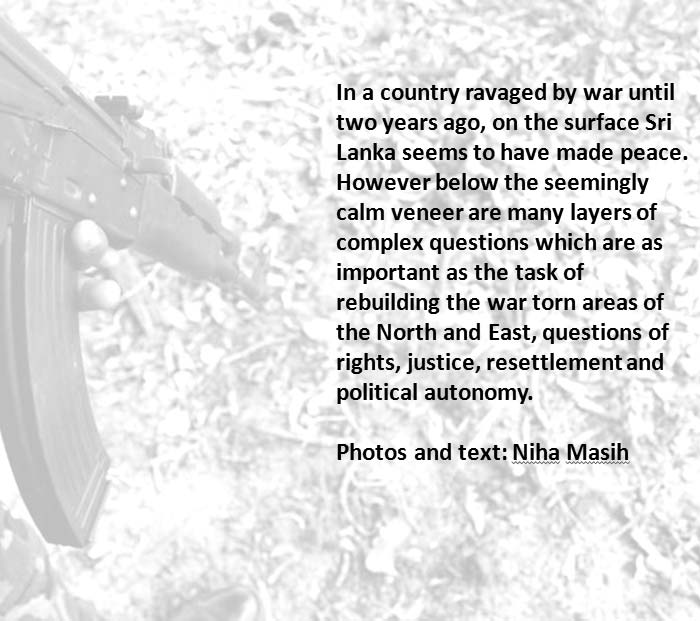Sri Lanka: The Propaganda Wars
Even though Sri Lanka seems to have made peace on the surface, below the seemingly calm veneer are many complex questions.
-
War Tourism: former LTTE strongholds – Prabhakaran's lair, the Jordanian ship Farah hijacked by the LTTE and beached along the No Fire Zone, and a modern Sri Lankan army memorial at the town of Kilinochichi, the former capital of the LTTE – have become popular tourist spots for Sinhala visitors from the South, raising questions of sensitivity.
-
The LTTE knitting group: where they once wielded guns, this batch of captured LTTE girls now wield knitting needles. Of the 11,000 LTTE cadre who surrendered after the war, almost all have been released. This last batch is working in a vocational center run by the government , and displayed to visitors as a sign of successful rehabilitation of former combatants.
-
A gathering of Sri Lanka's Tamil parties in Jaffna. After ten rounds of talks with the government on political autonomy to the Tamil regions, there seems to be no solution. The government blames them for being a divided house, while they claim the government is not serious about devolution.














